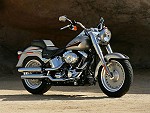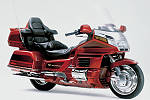Visit the old website: |
Suzuki Hayabusa Stuff:  Tech Specifications Tech Specifications Color Schemes |
Featured story lines: LAMS and Commuter motorcycles Motorcycle Picture Galleries Motorcycle Specs and Pricing |
What class of motorcycle should I consider ? – New motorcycle – Part 2

Whether starting out or simply choosing your first motorcycle or another new motorcycle there is a huge range to choose from. Hence I decided to write this page about the difference types and classes of motorcycles that you can choose from.
(Also note that the entire series of articles from my old dixonarchive.com site will eventually be transferred here.)
Firstly choose the type or class of motorcycle that represents the type of riding you normally do. Of course many people choose their bikes purely out of emotional reasons and so can you!
However in most cases long term happiness occurs when you choose the type of bike that fits into your life style and desires. Lets face it the Ducati 911 can be ridden off-road too but I don’t think you or the bike will have good time. That said a motorcross class motorcycle can do the home to work run just as easily as the street racer class.
There a a ton of different types and classes sub-classes of motorcycles eg. Faired Naked and so forth so spend time with each one before making any judgements.
These are some examples of types and classes of motorcycle classes and the values commonly attached to them.
 You want on the road or track adrenalin rush and handling only limited by your own ability ?
You want on the road or track adrenalin rush and handling only limited by your own ability ?
The sports bike is for you.
Examples: Yamaha YZF-R1 or R6, Suzuki GSX-R1000 or 600, Ducati 999,
You want looks and fantastic specs ?
The sports bike is for you preferably by a limited volume manufacturer.
Examples: Benelli Tornado, MV Agusta F4, Ducati 999,
You want looks and street cred ?
The new cafe racer class or traditionally the big bore bikes are for you.
Examples: Aprilia Tuono, MV Agusta F4 Brutale, Benelli TnT, Suzuki Hayabusa
 You want looks and comfort ?
You want looks and comfort ?
The cruiser class is for you.
Examples: Harley Davidson Fatboy, Kawasaki Vulcan, Honda VTX
You want off-road ability and fun ?
The dirt or trail even a dual purpose bike is for you. You might even consider the new super motard class! Examples: BMW R1150GS, Suzuki V-Strom
 You want comfort, luggage and rider & pillion features ?
You want comfort, luggage and rider & pillion features ?
The tourer or super tourer class is perfect.
Examples: Honda Goldwing, BMW K1200LT
You want performance, comfort, luggage and rider features ?
The sports tourer is for you.
Examples: Honda VFR800, BMW K1200RS
You want to minimal use of fuel to get to the shops or work ?
The 250cc class and under or perhaps a scooter is for you..
Examples: Any 250cc motorcycle Vespa, Honda scooter, etc… Their names change so often…
So there you go just some of the different motorcycle types to choose from. This list is not all inclusive so there are plenty more so make sure you check them all out !
Engine capacity
Once you’ve decided on the type of motorcycle its off to choose the engine capacity. Like cars, motorcycles tend to easily sub-catergorised by engine capacity.
Motorcycle engine capacity are usually categorized by Cubic Capacity or cc in lowercase is the usual measure. cc is a metric measurement where 250cc = .25 litres. Why cc’s ? Because the majority of bikes have engines under 1000cc or 1 litre.
However unlike cars when a motorcycle has a lower capacity it is ‘usually’ given a smaller frame and a different fairing if present. Although at the rate manufacturers progressing it probably won’t be long before the same frame and fairing are used across the range. In my opinion this is a sad thing as for example I don’t want my latest top of the range super bike look exactly like the base model 250cc. When will manufacturers (esp. Japanese manufacturers) realise this is a stupid move ?
So what are the common classes ?
50cc | 125cc | 200cc | 250cc | 600cc | 750cc | 1000cc
Of course there are exceptions eg. 85cc, 400cc and 650cc in the motorcross bikes and 1300cc – 1800cc production road bikes but these are relatively ‘rare’ in terms of overall sales.
Different strokes
Generally speaking the lower capacities are predominantly 2 stroke engines and more often than not are dirt or trail bikes and scooters. 4 strokes can be found on motorcycles greater than 200cc. 2 stroke engines have significantly different characteristics to the 4 stroke and hence riding styles.
Big bikes
The 500cc class was classified as the ‘big’ capacity bikes of the 70’s started but have been replaced by the 600cc bikes. The 600cc are a relatively new class made popular in the 1990s. Likewise they are no longer considered ‘big’ capacity, those of greater the 900cc and now considered ‘big’.
The large capacities have been around for quite while but where not readily available until the late 80s. All made possible due to advances made by the Japanese manufacturers.
Different configuration
Within the capacity category there are engine configuration differences.
For example single cylinder, two cylinders or twins, three cylinders of triples and 4 cylinders NOT known as quads (hah hah) and so forth. It is how the engines are designed or arranged is what this section is all about. For example, the flat twin, In-line 4, v4, flat six and so forth.
The 2 main ones are Twin cylinder and the Four cylinder formats. Again there are difference engine characteristics between the 2 arrangements. Briefly the Twins, usually in a V configuration can’t rev as fast but produce more power at lower revs and sound ‘characteristic’ and are ‘lumpy’. Although they don’t produce the same power for engine capacity they produce more torque and are lighter. Variations to the V include the Flat Twins (read BMW) and the Parallel Twins (Um…not very many I only know of the Kawasaki 250s and the Yamaha 850s).
The fours rev much faster and produce much more power but ‘vibe’ they usually sound car (read ‘normal’) like when combined with high cc’s. They are usually in an in-line format. Power is produced up high and torque mid to high rev range. Variations include the V-Four (read only Honda).
There are other configurations including Single cylinder, read most trail and dirt bikes, 3 Cylinders (read Triumph ?), Flat 6 (read Honda). Each having definitive characteristics in noise, power delivery etc… You’ll probably never see s in-line six as it’ll be too wide although a V6 might be possible ? After all Hoss Boss has a V8 …. Each format is suitable for certain main class ie Tourer, Dirt etc.. but like all things there are exceptions.
Which is better? As I mentioned earlier it depends to what sort of bike its for and what you prefer. Singles are chosen for lightness and easy maintenance hence chosen for dirt use but are very vibey. V Twins and Parallel Twins for lightness and width but have vibration problems at higher capacities and/or at certain angles and are torquey have character. Fours are relatively complex, heavy but powerful.
Choosing which class when limited by license (Applies mainly to Australia) is easy so I guess the primary consideration is the type but within that class there are heaps of very similar choices. I understand new laws allowing learner riders to ride bikes by power to weight or something like that in Australia will allow a greater choice of bikes hence freeing the 250cc restriction, regardless the models available haven’t changed much either over the past 10 years of so all the factors of reliability, parts, cost and so forth are not a real concern. Perhaps the only thing you have to worry about is the past life of the bike if purchasing a second hand motorcycle.
Purchasing a pre-owned motorcycle has some disadvantages but also many advantages apart from the lower price, such as your preferred color scheme/decals and perhaps it has modifications that you already want.
Go to Part 3
